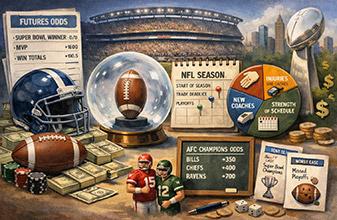Blair’s Lock Tournament Bet

Casino games tournaments are fun, and they can be profitable too. In upcoming articles, we will continue to publish a series of excerpts from Stanford Wong’s book, Casino Tournament Strategy. This information is valid in online tournaments or in a brick-and-mortar casino, such as in Las Vegas or other casino towns like Atlantic City.
Third-Last Hand
If you get only one secret bet, save it for the final hand no matter whether you play first or second. If you get two secret bets, use the first one when you have to bet first on the third-last or second-last hand. If you have the option of passing a hand (equivalent to a bet of zero), consider making a secret pass.
If you bet second, you are BR2, and BR1 makes a secret bet, bet enough to get the swing you need. Act as if BR1 has bet zero. If you bet second, you are BR2, and BR1 does not make a secret bet, of course you make a bet that will give you the swing you need.
If you bet second and you are BR1, try to match BR2’s bet.
Second-Last Hand
If you have two secret bets and you bet first, use a secret bet. If you are BR2, bet the max. If you are BR1, try to match BR2’s bet.
Last Hand
If it is allowed, make a secret bet. Your opponent probably will make a secret bet also.
Blair’s Lock
This strategy was first devised by Blair Rodman, a tournament expert.
Suppose you are ahead by 1070 to 500, the max bet is 500, and you must bet and play first. You have a lock if you make the correct bet and play the hand correctly. Try to solve this one yourself.
If you bet too small, your opponent could get a natural on a bet of 500 and beat you. If the player hand is not a natural, your opponent will hit if you stand or stand if you hit; thus if your opponent wins a max bet and you lose too much, you lose the match.
The solution is to bet 130, and if the player hand is not a natural you surrender. Even twenty against 5 you surrender. You finish with 1005 and the most your opponent can end up with is 1000.
The break-even point for Blair’s Lock is your bankroll must be more than 17/8 of BR2’s bankroll. If BR2’s bankroll is not exactly divisible by 8, you might have to have a chip or two more. The appropriate bet is double the amount by which your lead exceeds one max bet, less a chip.
A Variation Of Blair’s Lock
You are BR1, you bet first on the final hand, and BR2 has no secret bet left. You can bet just less than twice your lead, and surrender if your opponent passes or bets the minimum.
For example: If you are ahead by 1200 to 960, you can bet up to 475. If BR2 passes, simply surrender no matter what you get to lock up a victory. You must bet enough to cover a max-bet double down by BR2, which in this example means betting at least 370. The easiest bet to remember is double your lead less a chip.
You Have a Virtual Lock
Play as if you have a lock if you have more than double BR2’s chips. Play as if you have a lock if you are more than two max bets ahead of BR2. Bet the minimum. (With secret bets and passes, make a secret pass.)
For example, suppose you are ahead by 850 to 400. Your best bet is pass. Your opponent wins the match with a big-bet natural, but you are a 96% favorite.
This article is part of a series, to be continued…
Excerpted with permission from Casino Tournament Strategy by Stanford Wong, edited for this format.











Please log in or register to leave a comment